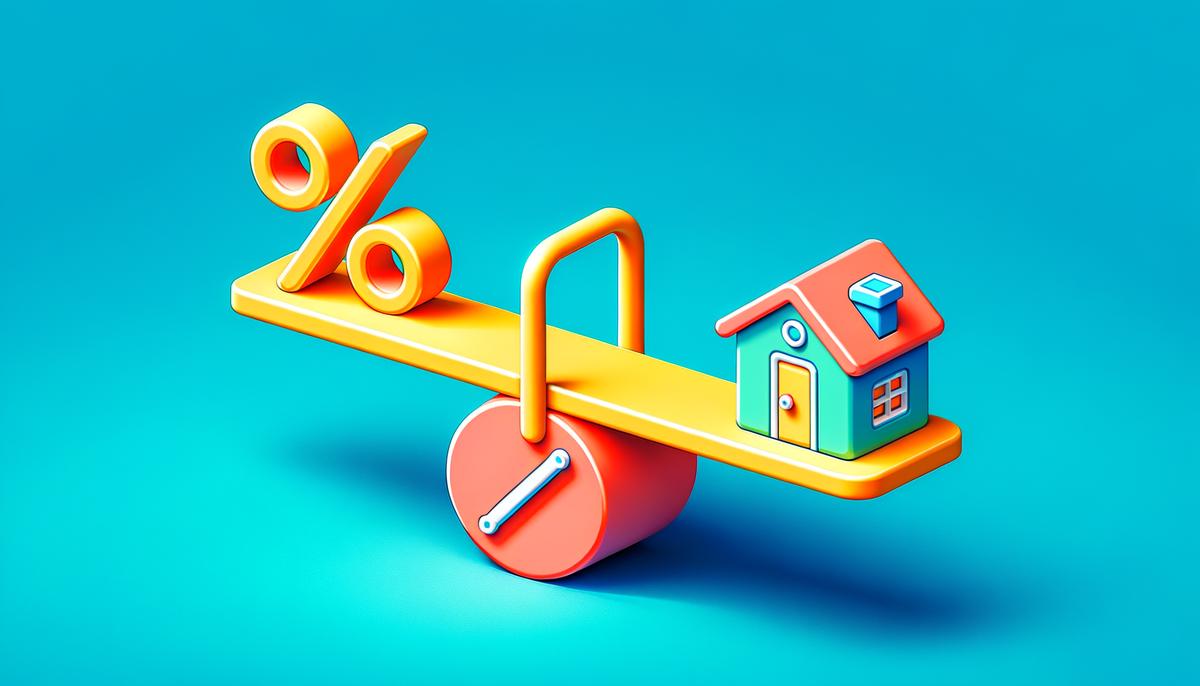Understand Different Mortgage Terms
Let's dive into how to choose the right mortgage term with pure, unfiltered facts.
Understanding Different Mortgage Terms
Short-Term Mortgages
Short-term mortgages, like the 15-year option, are the "sprints" of the mortgage world. They come with higher monthly payments but lower interest rates. You'll pay less for borrowing the same amount of money, saving cash in the long run if you can handle the higher payments now.
Long-Term Mortgages
The 30-year mortgage is your "marathon." It offers lower monthly payments, making it more manageable for most first-time buyers. However, you'll end up paying more in interest over the years. It's a smoother ride monthly but pricier in the long run.
Side-By-Side Comparison
| Mortgage Term | Monthly Payments | Interest Rate | Total Interest Paid |
|---|---|---|---|
| 15-Year | Higher | Lower | Less |
| 30-Year | Lower | Higher | More |
Custom Terms
Many lenders offer custom terms ranging from 10 to 25 years. These allow you to balance between manageable monthly payments and the total cost over time, fitting your financial needs like a glove.
Adjustable-Rate Mortgages (ARMs)
ARMs start with lower rates and payments for a set period, then adjust based on market rates. They offer potential savings initially but come with the risk of payments increasing later.
Fixed vs. Adjustable
| Mortgage Type | Initial Rates | Long-term Stability | Potential Savings |
|---|---|---|---|
| Fixed-Rate (15 or 30) | Higher | Steady | Predictable |
| Adjustable-Rate (ARMs) | Lower Initial | Variable | Potentially More |
Remember, choosing the right mortgage term isn't just about numbers—it's about your life plans, financial health, and future goals.

Evaluate Your Financial Situation
Choosing the right mortgage term requires getting real about your financial health. Here's a financial wellness checkup with a dash of humor:
- Assess your current income: Is it steady or variable?
- Calculate monthly expenses: Include everything from bills to your dog's gourmet kibble.
- Consider long-term financial goals: Are you saving for a new car, planning a world tour, or dreaming of retirement?
- Evaluate your comfort level with different payment options:
- 15-year mortgage: Higher monthly payments but faster payoff and less interest
- 30-year mortgage: Lower payments but more interest over time
- Emergency fund status: Can you handle unexpected expenses, or does every surprise send you into a tizzy?
Quick comparison:
| Consideration | Short-Term Mortgage (15-Year) | Long-Term Mortgage (30-Year) |
|---|---|---|
| Monthly Payments | Higher | Lower |
| Interest Paid Over Time | Less | More |
| Financial Flexibility | Less | More |
| Alignment with Lifestyle | More Sacrifice Now, More Gain Later | More Comfort Now, More Cost Later |
Remember, it's not just what you make, but how well you manage it. Choose a mortgage term that aligns with your financial situation and lifestyle goals.

Consider Interest Rates
Interest rates can be your best friend or your worst enemy when it comes to mortgages. Here's what you need to know:
- Shorter terms (e.g., 15-year mortgages) typically have lower interest rates.
- Less risk for lenders = lower rates
- You pay less in interest over the life of the loan
- Higher monthly payments
- Longer terms (e.g., 30-year mortgages) come with higher interest rates.
- More risk for lenders = higher rates
- You pay more in total interest
- Lower, more manageable monthly payments
- Lower monthly payments from longer terms free up cash flow for other financial goals or emergencies.
- Consider your current financial situation and future plans when choosing between short and long-term mortgages.
Here's a snapshot of the trade-offs:
| Consideration | Short-Term Mortgage (15-Year) | Long-Term Mortgage (30-Year) |
|---|---|---|
| Interest Rate | Lower | Higher |
| Total Interest Paid | Less | More |
| Monthly Payments | Higher | Lower |
| Budget Flexibility | More Rigid | More Flexible |
| Long-Term Savings | Significant | Minimal |
Choose the option that best suits your financial situation, goals, and comfort level with monthly payments.

Future Plans
Your mortgage term should align with your future plans. Consider the following scenarios:
- Long-term residence plans:
- 30-year mortgage might be ideal
- Offers stability and lower monthly payments
- Allows for financial comfort and predictability
- Short-term residence or planning to sell soon:
- 15-year mortgage could be beneficial
- Builds equity faster
- Advantageous for quick sale and reinvestment
- Uncertain plans or mix of short and long-term goals:
- Consider custom terms (e.g., 20-year mortgage)
- Balances manageable payments with faster equity building
- Offers flexibility in timeframe
Here's a summary to help you decide:
| Future Plans | Best Term | Why? |
|---|---|---|
| Long-term residence | 30-Year Mortgage | Lower monthly payments, stability, financial comfort |
| Short-term residence/selling soon | 15-Year Mortgage | Higher equity build, beneficial for quick sale and reinvestment |
| In-between (unsure) | Custom Terms (e.g., 20-Year) | Balanced payments, faster equity, flexibility in timeframe |
Choose a mortgage term that harmonizes with your life plans, whether you're settling in for the long haul or preparing for your next move.

Remember, choosing the right mortgage term is about aligning with your future goals and financial comfort. Whether you're in it for the long haul or planning a quicker move, make sure your choice sets you up for success and happiness. Happy home hunting!
- National Association of Realtors. 2021 Home Buyers and Sellers Generational Trends Report. 2021.
- McMaster J. How to Choose a Mortgage Term. SoFi. 2024.
